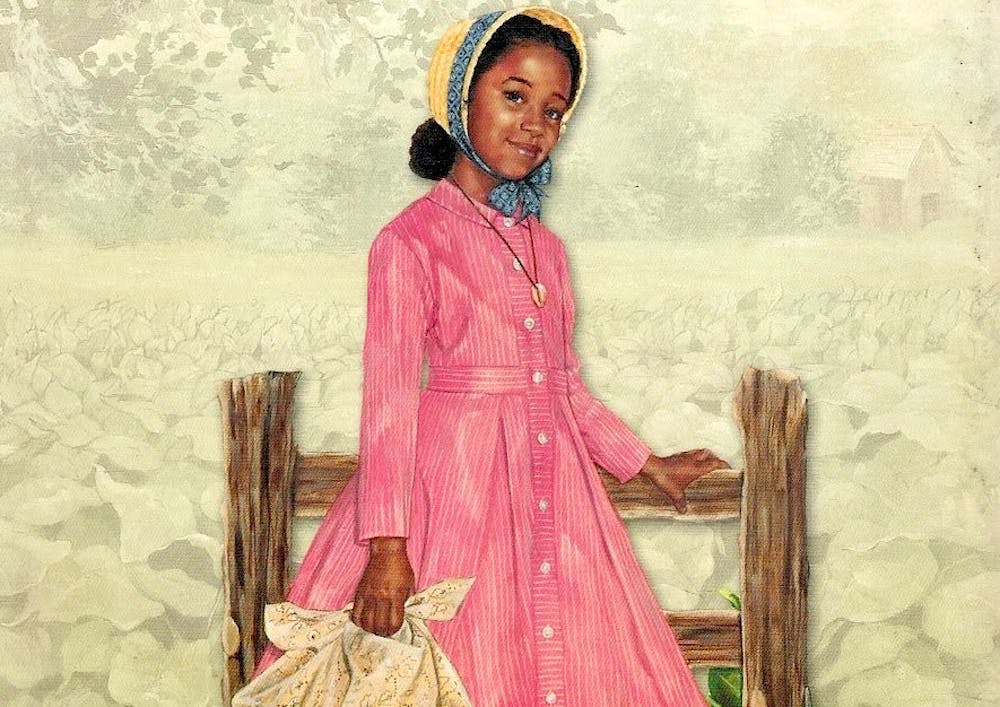Dolls, with their babydoll dresses, bonnets, and quick–to–tangle hair, are a quintessential aspect of childhood. There's something about a friend who never objects to being dragged around a sandbox or playing pretend that appeals to a child's imaginative tendencies. For some dolls, however, it isn’t always playtime. Addy Walker, American Girl Doll’s first doll of color, is imbued with deep historical and educational meanings that extend far beyond picking out matching outfits and hosting mock tea parties.

Racist historical dolls, photo courtesy of the Jim Crow Museum.
Black dolls have a long, horrifying history in the United States. Black people have often been depicted and mimicked using offensive stereotypes by way of dolls. There were picaninnies, which were caricatures of Black children often with "bulging eyes, unkempt hair, red lips, and wide mouths into which they stuffed huge slices of watermelon." Then there were Sambos. Inspired by an 1899 offensive children’s book titled Little Black Sambo, this image became an important yet insidious element of 20th century popular culture. Likewise, mammies—loyal and jubilant Black female servants of their white masters—played into the stereotype that Black enslaved women were passive, obedient, and content in their positions. These types of dolls bred hatred, spread harmful stereotypes, and even romanticized conditions of slavery and discrimination. Due to these objectionable visual representations of Black people through history, it is important to hold a magnifying glass up to more contemporary examples to ensure they don’t reflect or reify any of those values.
Representation in dolls has been a topic of discussion among Black activists and scholars for decades. Booker T. Washington stated that “In the same way colored people have begun to see the wisdom of giving their children dolls that have their own color and features, and which will have the effect of instilling in Negro girls and in Negro women a feeling of respect for their own race.” Years later, Marcus Garvey wrote along the same lines, “Give your children dolls that look like them to play with and cuddle.”

Addy Walker the American Girl Doll, photo courtesy of American Girl Doll
Despite the call for more Black representation in dolls dating back to the post–antebellum period, American Girl Doll and other companies didn’t answer until the late 20th century. In 1993, Addy Walker was added to the brand’s American Girls Collection, an assortment of young girl dolls from specific historical periods—each with their own set of educational, fictional stories illustrating how they would have lived. All of Addy’s predecessors were white, and they were set in historical times ranging from World War II to colonial Williamsburg. To construct accurate stories of their backgrounds and lives, American Girl Doll often hired experts to review historical details. In Addy's case, however, an entire advisory board full of prominent Black scholars worked to determine her history, her appearance, and other salient details. One member of the board, Cheryl Chisholm, noted, “We [the board members] were all very concerned that the experience of slavery not be white–washed.”
Deciding that Addy should be a young girl born into slavery journeying to freedom in the North with her mother, the board struggled to find the best way to respectfully approach the horrors of slavery while also keeping the young target audience in mind. Numerous controversies arose during the creation process, including a debate on whether the n–word should appear in the books as well as what the texture of the doll's hair should be. Balancing corporate interests with profit incentives and target audiences, the board worked hard to construct Addy and her story in the most ethical way possible.
While Addy Walker’s journey to freedom was rousing and educational for many, it certainly elicited a fair amount of criticism. Given that so few options for Black dolls existed at the time, many disapproving critics felt that Addy’s story as the first Black American Girl Doll pigeonholed the Black experience as a source of anguish and trauma. While young white children had countless options of dolls with carefree stories, the only option for young Black girls was a representation mired in painful history. Many Black women remember having mixed feelings about the doll, as one anonymous lifestyle writer remarks, "I was grateful to finally have representation in Addy, but seeing myself in her made me simultaneously relieved and uneasy."
Through the years, more and more brands have recognized the importance of diversifying their dolls. American Girl Doll has since added the stories of many other young women throughout history, particularly women of color like Native American doll Kaya and Latinx doll Josefina Montoya. While the American Girl Doll company often retires characters that aren’t as successful, a handful of other dolls of color have been or are currently part of the collection. American Girl Doll has also incorporated Cécile Rey from 1850s New Orleans and Melody Ellison from the 1960s civil rights era. Furthermore, with an increasingly diverse range of skin tones, hair textures, and physical qualities in American Girl Doll’s Truly Me Collection, it is clear that representation is becoming a greater priority for doll companies.

While much progress remains to be made in the doll diversity domain, the story of Addy, as well as her successors, is largely inspirational in the context of America’s twisted history with Black dolls. Regardless, it is vital to maintain a critical stance in order to listen to the needs of young Black women when it comes to their representation.

